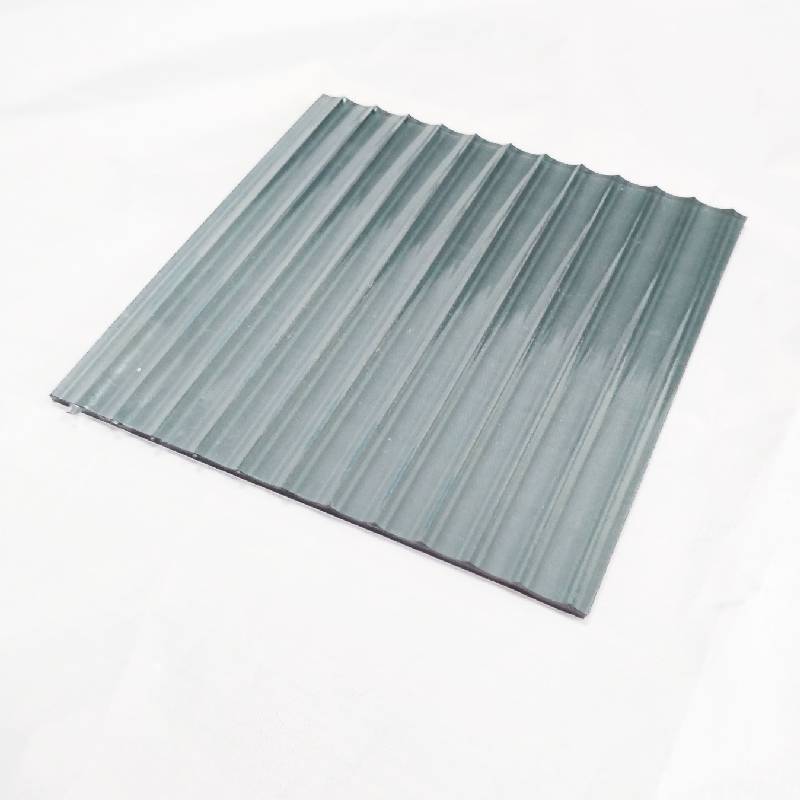Tempered Laminated Glass Specification An In-Depth Overview
Tempered laminated glass is a popular choice for both architectural and automotive applications due to its exceptional strength, safety, and aesthetic appeal. Understanding the specifications of tempered laminated glass is essential for architects, engineers, and designers who aim to utilize this material effectively.
Definition and Composition
Tempered laminated glass consists of two or more layers of glass that are bonded together with a plastic interlayer, typically made of polyvinyl butyral (PVB) or ethylene vinyl acetate (EVA). The glass undergoes a process of heat treatment, known as tempering, which increases its strength and thermal resistance. The interlayer provides an additional layer of protection, ensuring that if the glass breaks, it will not shatter into sharp pieces, reducing the risk of injury.
Strength and Safety Features
One of the primary advantages of tempered laminated glass is its impressive strength. The tempering process increases the glass's resistance to impact, making it suitable for high-traffic areas and environments that require enhanced safety. The interlayer also contributes to sound attenuation and UV protection, making tempered laminated glass an ideal choice for buildings located in noisy urban areas or for applications requiring privacy.
Specifications and Standards
When specifying tempered laminated glass, several key factors must be considered
1. Thickness The overall thickness of tempered laminated glass typically ranges from 6mm to 21mm, depending on the application and structural requirements. The thickness of the individual layers of glass and interlayer can be tailored to meet specific design needs.
tempered laminated glass specification
2. Structural Performance It is crucial to analyze the load-bearing capabilities of tempered laminated glass, particularly in applications such as facades and balustrades. Manufacturers usually provide detailed performance data, including load resistance and deflection under various conditions.
3. Impact Resistance The glass's ability to withstand various impacts is often tested according to international standards. For instance, the ANSI Z97.1 and CPSC 16 CFR 1201 standards assess the glass's resistance to breakage and safety performance.
4. Optical Quality The glass must meet specific optical clarity and distortion standards, ensuring that it provides a clear view without visual impairments.
5. Finishing Options Tempered laminated glass can be customized with different finishes, such as tinted, frosted, or patterned, allowing for creative design possibilities while maintaining performance standards.
Applications
Tempered laminated glass is widely used in various applications, including commercial buildings, residential homes, storefronts, skylights, and shower enclosures. Its ability to combine aesthetic appeal with safety features makes it a favorable choice for both modern and traditional designs.
Conclusion
In summary, the specifications of tempered laminated glass are vital for ensuring safety, durability, and design flexibility in various applications. By understanding its composition, strength, standards, and potential uses, professionals can effectively select and apply this versatile material to enhance their projects. Whether for architectural design or structural engineering, tempered laminated glass continues to be a leading choice in delivering both form and function.
 Afrikaans
Afrikaans  Albanian
Albanian  Amharic
Amharic  Arabic
Arabic  Armenian
Armenian  Azerbaijani
Azerbaijani  Basque
Basque  Belarusian
Belarusian  Bengali
Bengali  Bosnian
Bosnian  Bulgarian
Bulgarian  Catalan
Catalan  Cebuano
Cebuano  Corsican
Corsican  Croatian
Croatian  Czech
Czech  Danish
Danish  Dutch
Dutch  English
English  Esperanto
Esperanto  Estonian
Estonian  Finnish
Finnish  French
French  Frisian
Frisian  Galician
Galician  Georgian
Georgian  German
German  Greek
Greek  Gujarati
Gujarati  Haitian Creole
Haitian Creole  hausa
hausa  hawaiian
hawaiian  Hebrew
Hebrew  Hindi
Hindi  Miao
Miao  Hungarian
Hungarian  Icelandic
Icelandic  igbo
igbo  Indonesian
Indonesian  irish
irish  Italian
Italian  Japanese
Japanese  Javanese
Javanese  Kannada
Kannada  kazakh
kazakh  Khmer
Khmer  Rwandese
Rwandese  Korean
Korean  Kurdish
Kurdish  Kyrgyz
Kyrgyz  Lao
Lao  Latin
Latin  Latvian
Latvian  Lithuanian
Lithuanian  Luxembourgish
Luxembourgish  Macedonian
Macedonian  Malgashi
Malgashi  Malay
Malay  Malayalam
Malayalam  Maltese
Maltese  Maori
Maori  Marathi
Marathi  Mongolian
Mongolian  Myanmar
Myanmar  Nepali
Nepali  Norwegian
Norwegian  Norwegian
Norwegian  Occitan
Occitan  Pashto
Pashto  Persian
Persian  Polish
Polish  Portuguese
Portuguese  Punjabi
Punjabi  Romanian
Romanian  Russian
Russian  Samoan
Samoan  Scottish Gaelic
Scottish Gaelic  Serbian
Serbian  Sesotho
Sesotho  Shona
Shona  Sindhi
Sindhi  Sinhala
Sinhala  Slovak
Slovak  Slovenian
Slovenian  Somali
Somali  Spanish
Spanish  Sundanese
Sundanese  Swahili
Swahili  Swedish
Swedish  Tagalog
Tagalog  Tajik
Tajik  Tamil
Tamil  Tatar
Tatar  Telugu
Telugu  Thai
Thai  Turkish
Turkish  Turkmen
Turkmen  Ukrainian
Ukrainian  Urdu
Urdu  Uighur
Uighur  Uzbek
Uzbek  Vietnamese
Vietnamese  Welsh
Welsh  Bantu
Bantu  Yiddish
Yiddish  Yoruba
Yoruba  Zulu
Zulu 

